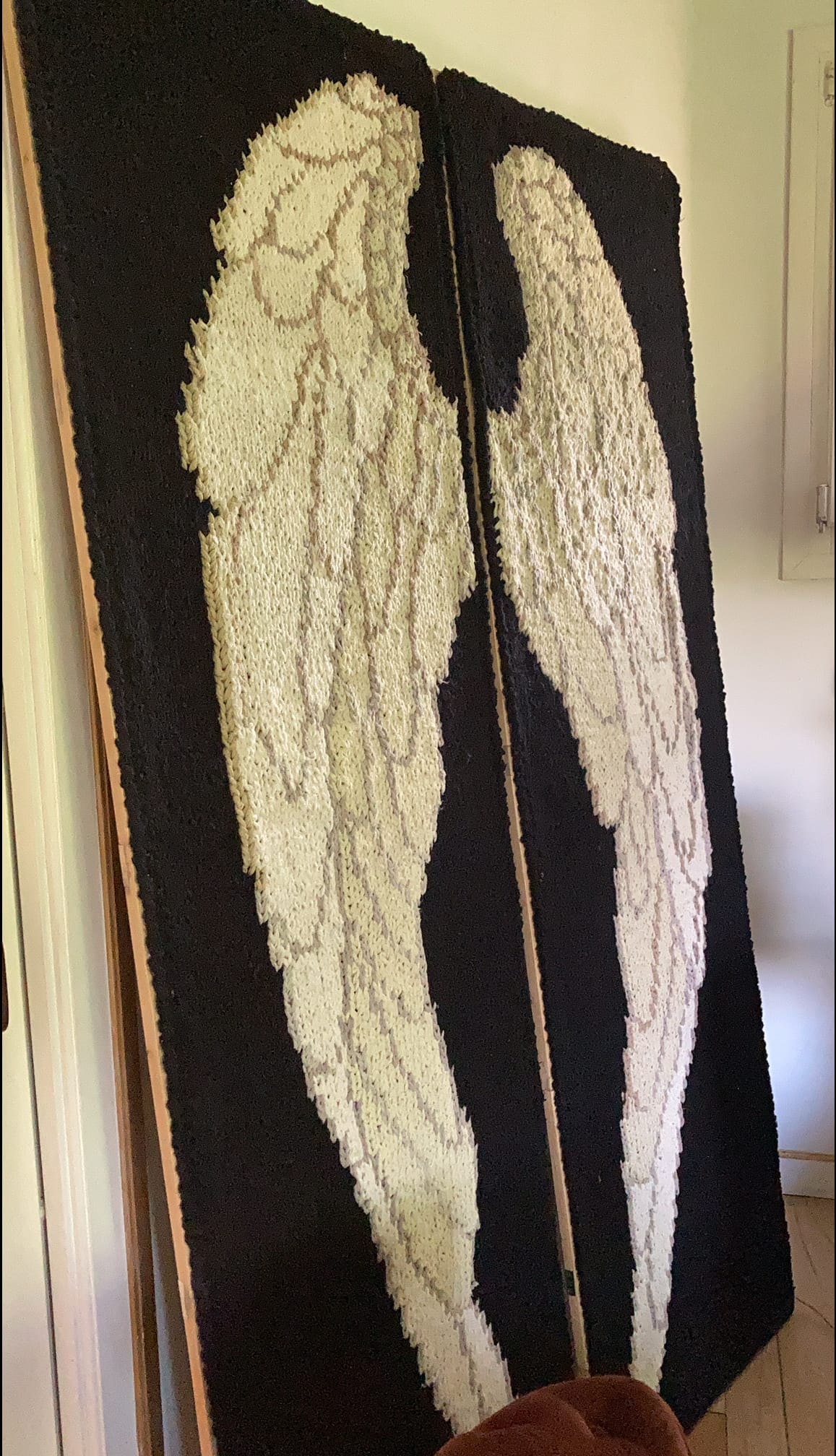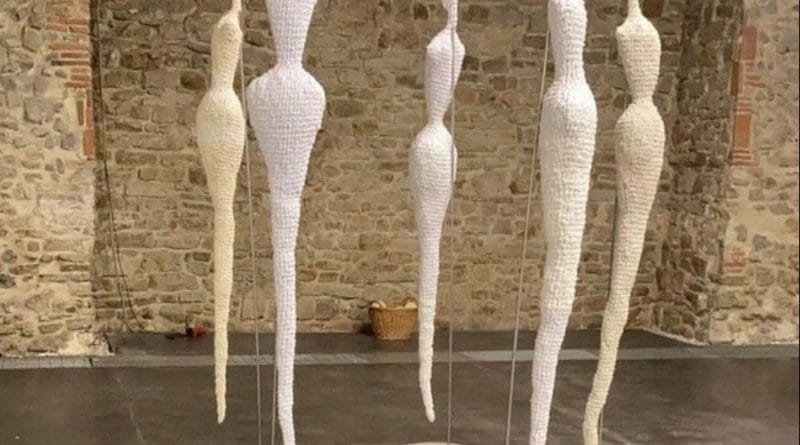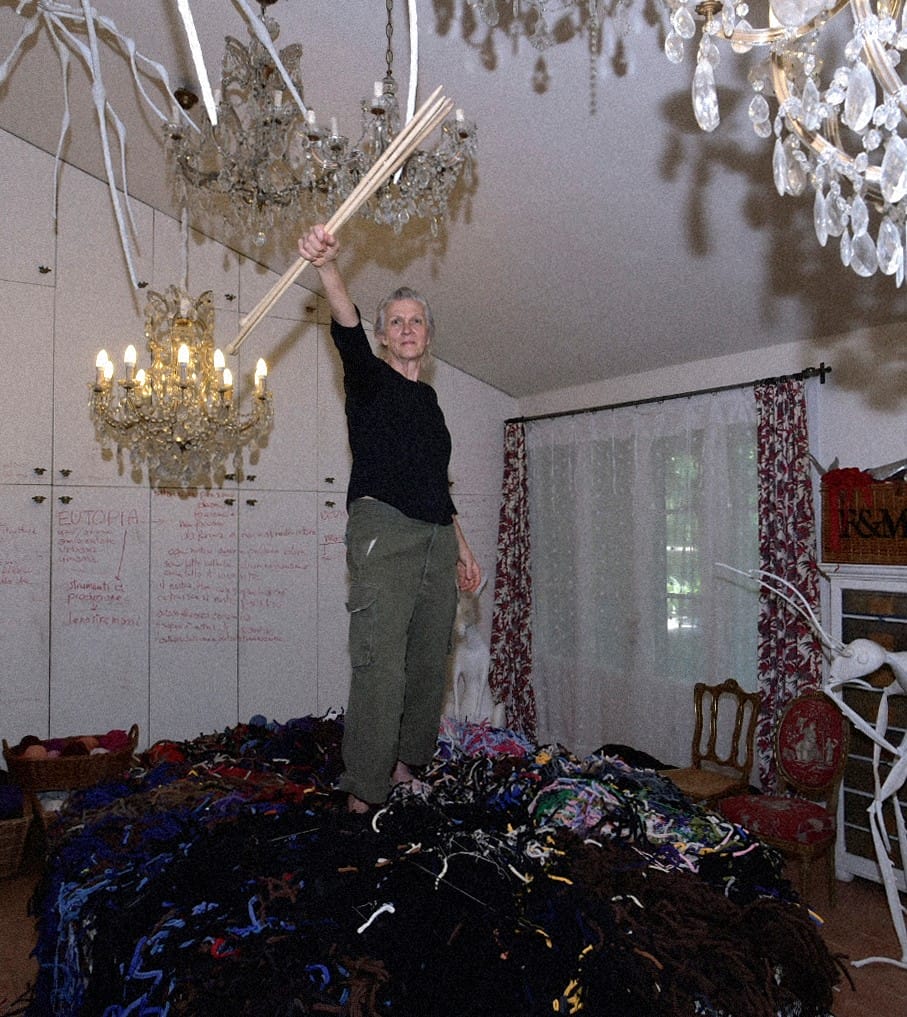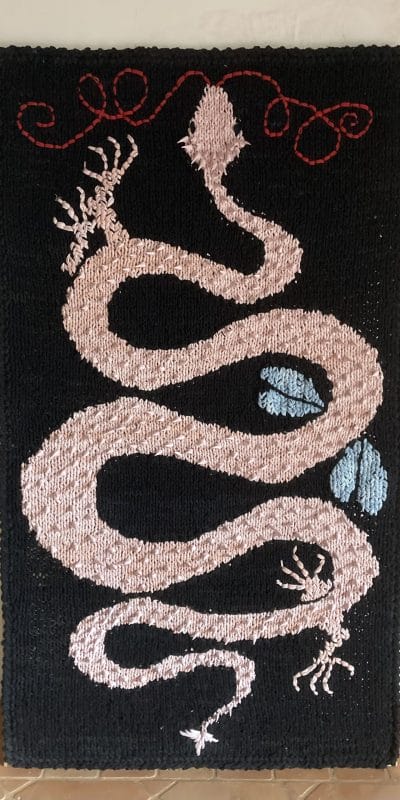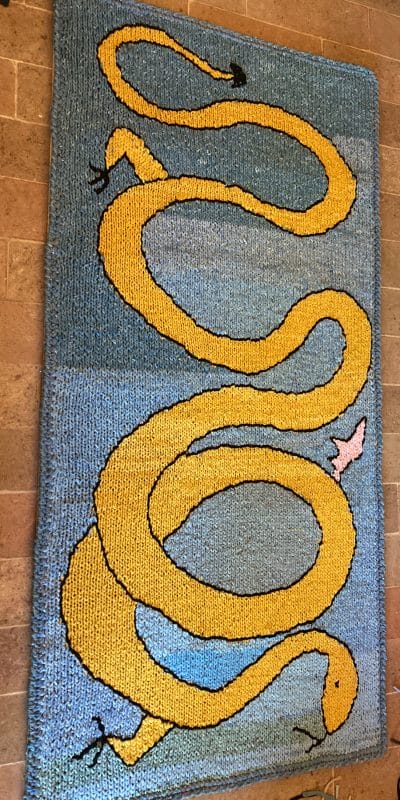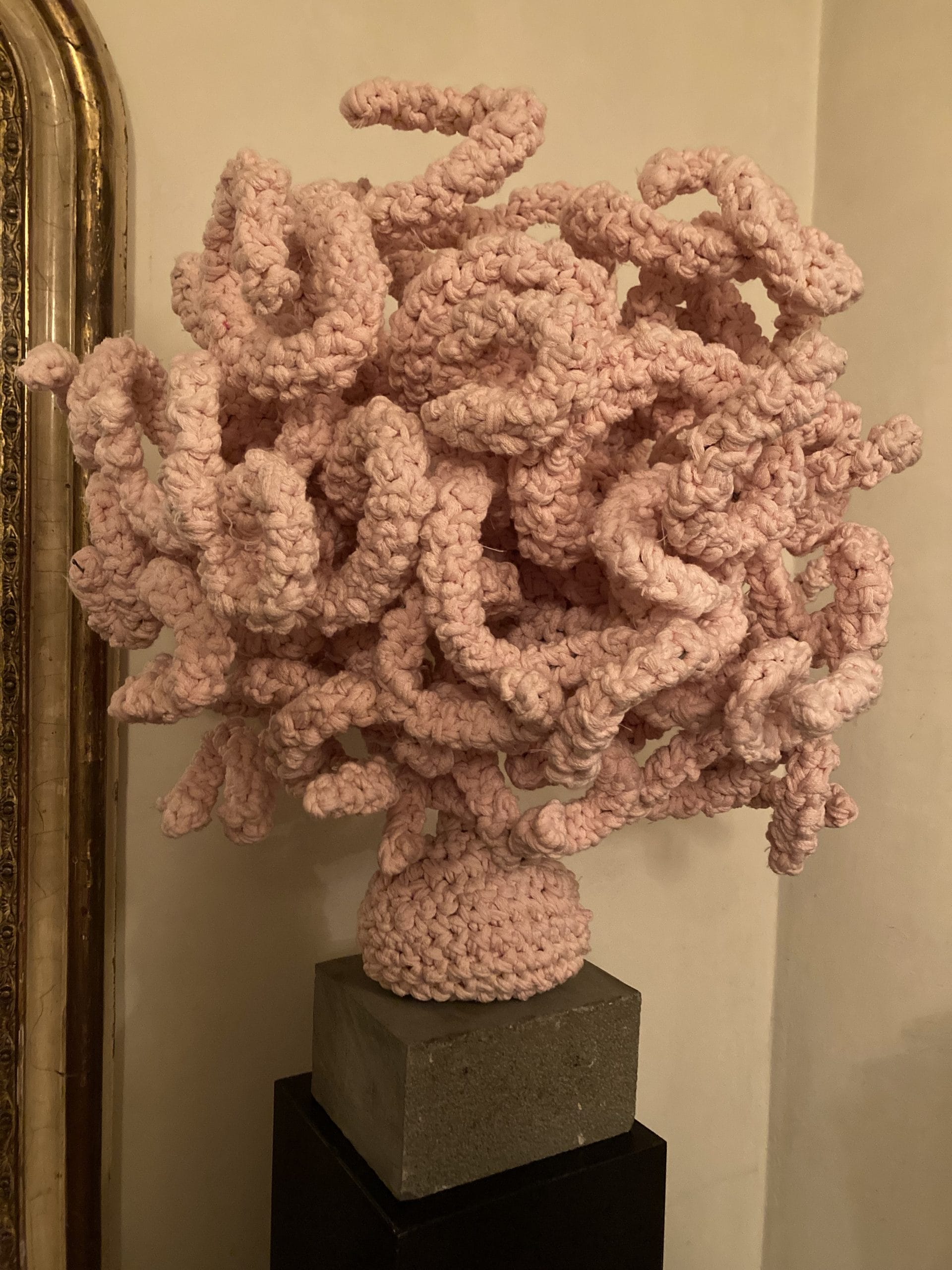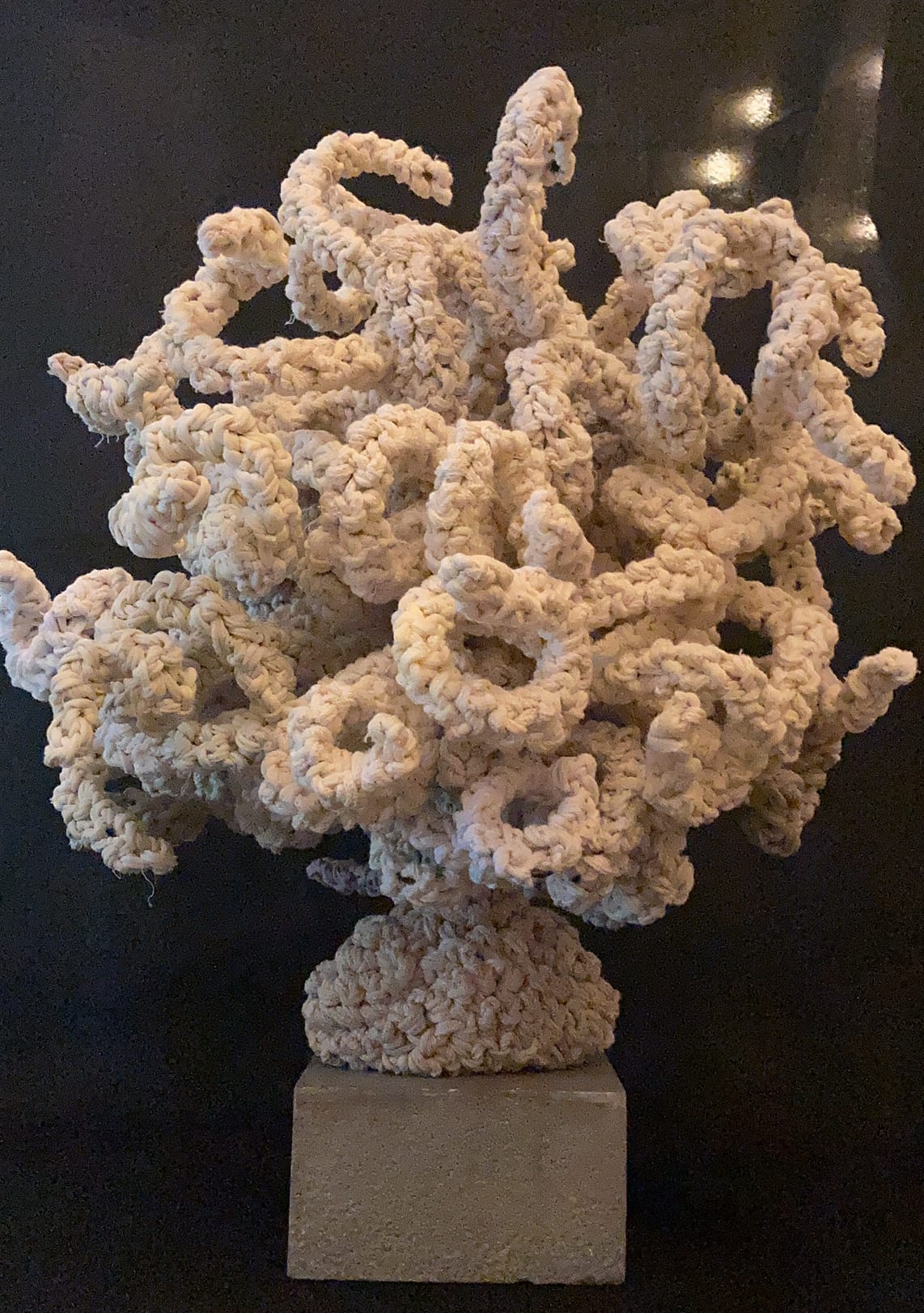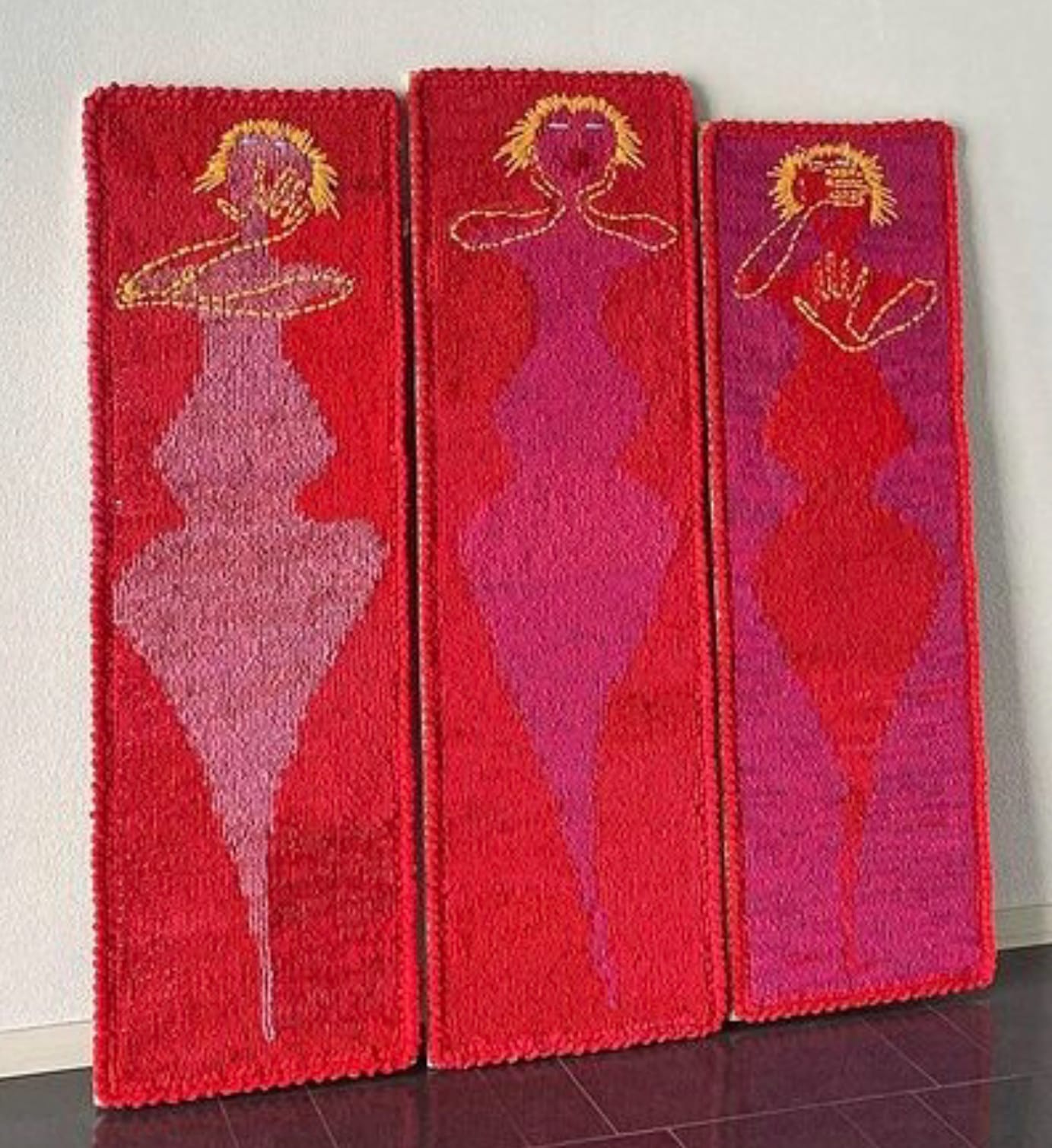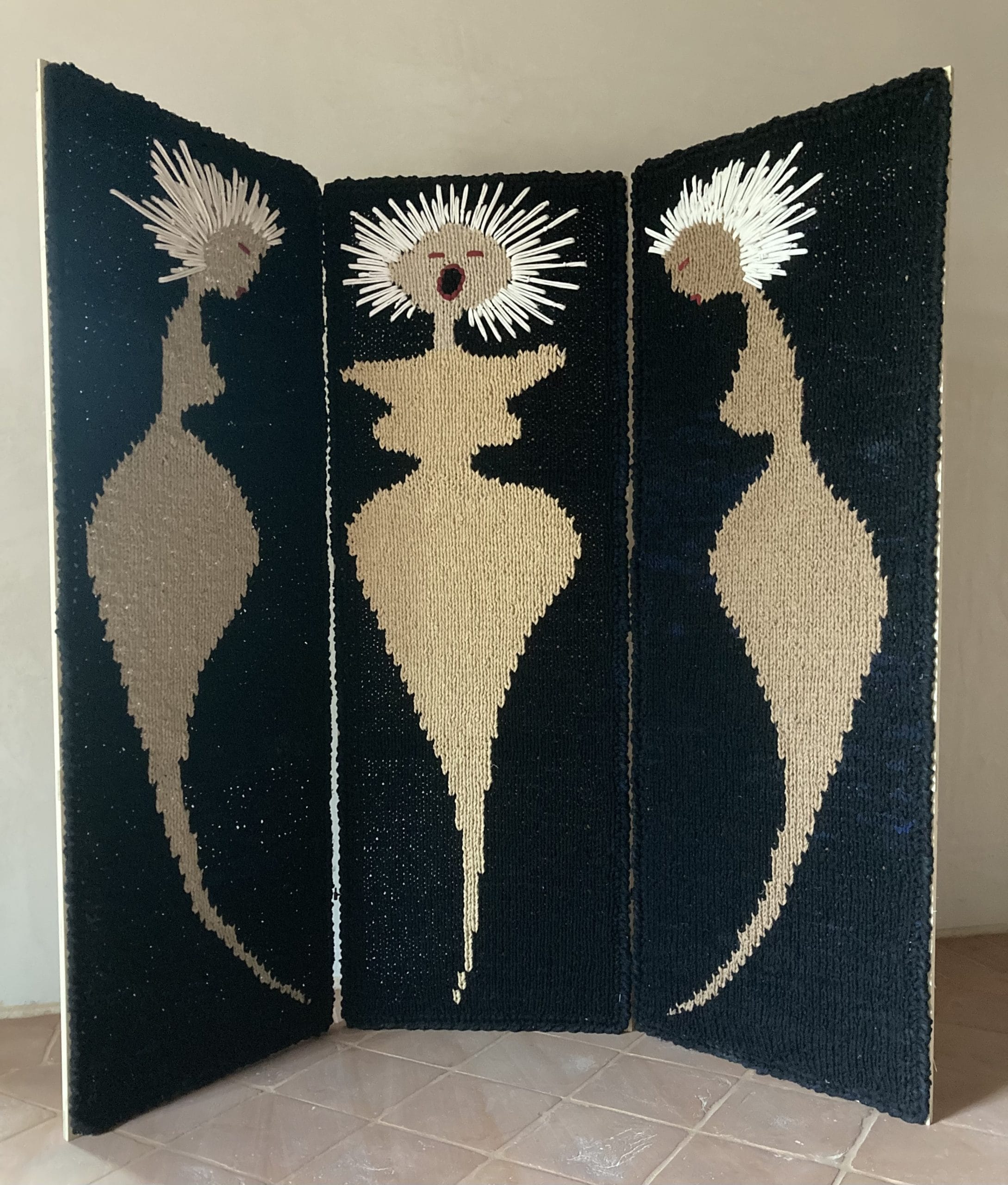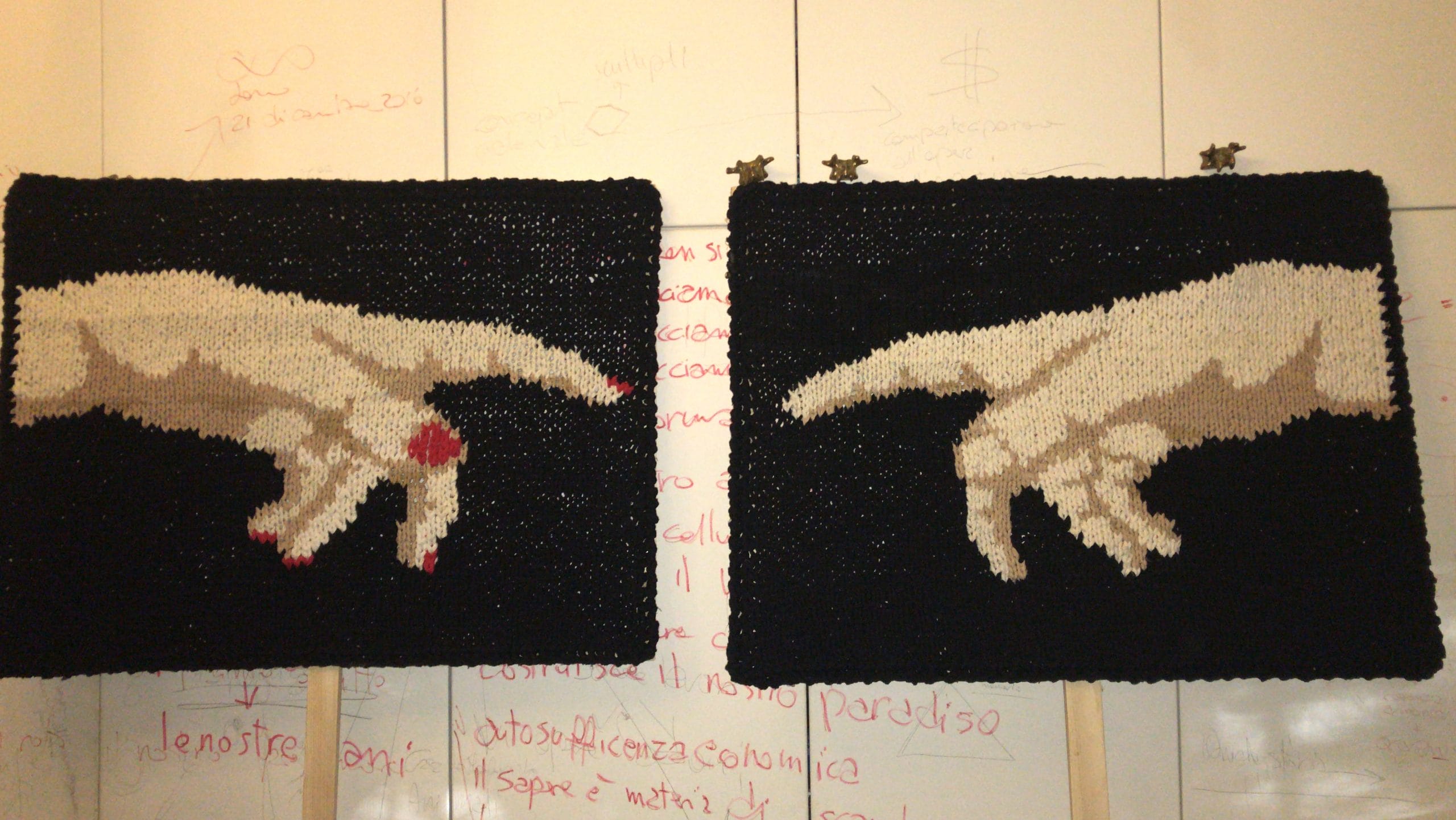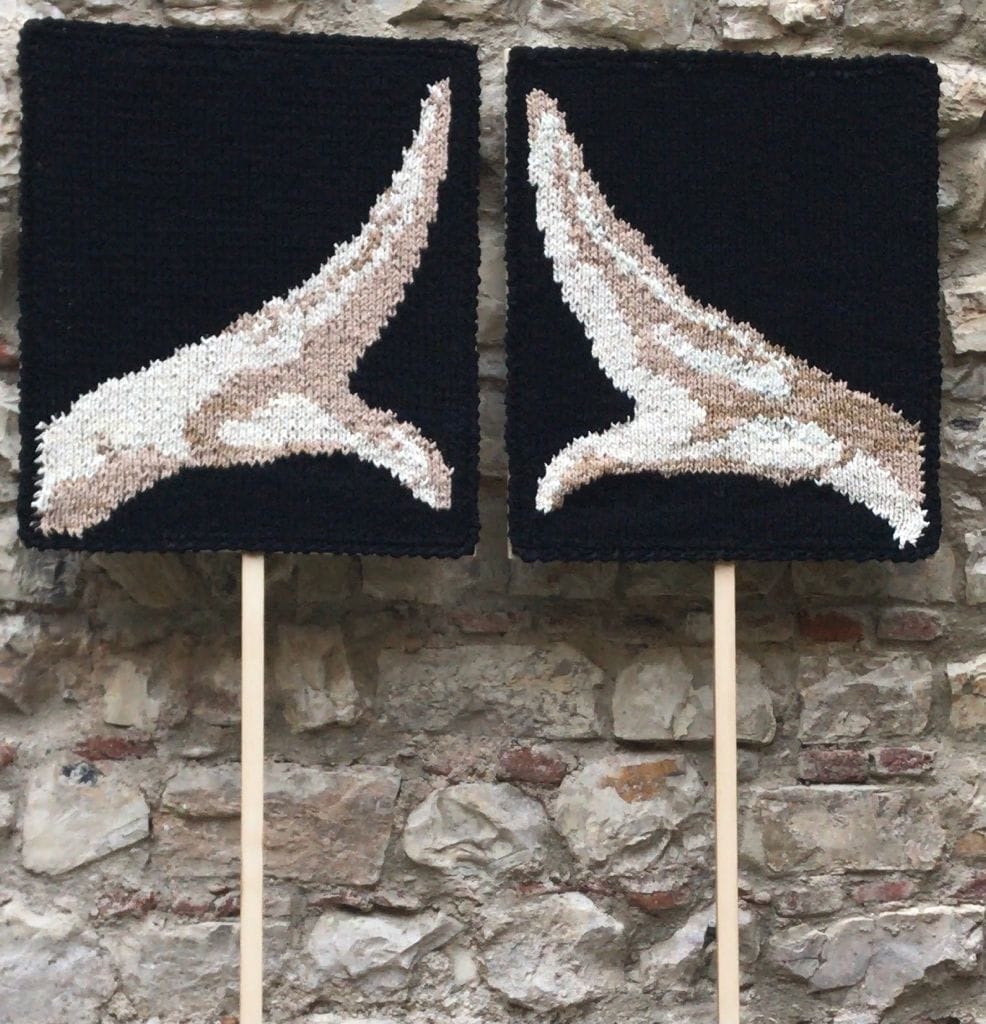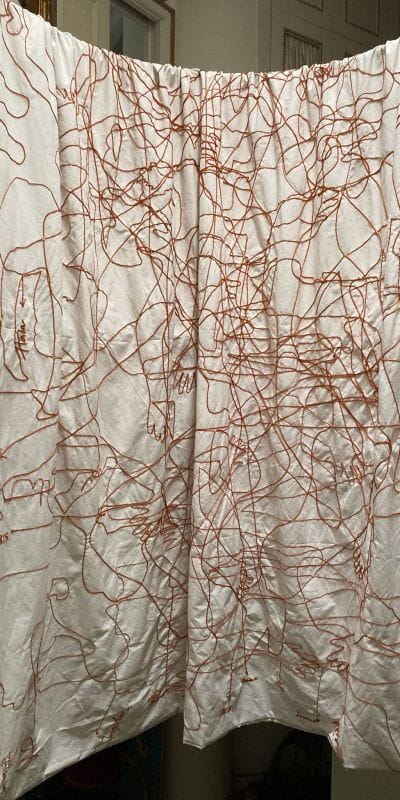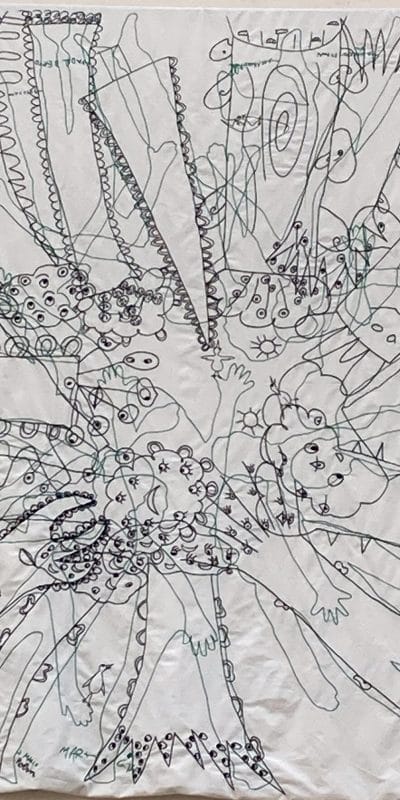PATRIZIA BENEDETTA FRATUS
*Foto in evidenza: RADICI 250X63X32cm (per ciascuna delle 5 strutture) 2021 – Scarto tessile – Pietra Photo credit: Patrizia Benedetta Fratus
Participatory works in which those involved become a living and active part of the work itself: this is the artistic practice of Patrizia Benedetta Fratus, a multi-material artist who uses textile waste as a medium and conducts research that investigates the languages of imaginary to overcome stereotypes and prejudices. In this interview, reply after reply, she led us to the roots of her works and projects.
Who is Patrizia Fratus, the artist?
Patrizia Benedetta Fratus is a storyteller. It is from a story that we come, it is a story that we live, it is of a story that we are composed. Knowing that the story we know is a partial version of what has been and what is, allows me to imagine something else, to tell new stories with which to give life to new worlds, infinite worlds. I see myself as one of our ancestors leaving their mark on the walls of our caves, them with the pigments, me with the thread, I set the names and shapes of our bodies.
What does ‘making art’ mean to you?
For me, art is a tool, a way of existing and making exist.
Textile is one of your favorite mediums. Why this choice?
I’ve always had a thread on hand. There has always been a thread and over the years I have increasingly realized that a thread is always needed. The thread – as a medium – is accessible, multiform in its coherent linearity, it connects, stitches up, leads. The plots are made of threads that allow me to tell new possibilities. Give me a thread and I will build a world for you.
Artivism, social art, relational art: how do you interpret these three areas in your practice?
“We are the revolution”, I reply with Joseph Beuys. I experience artivism, social art and relational art as a single practice. Mine is an open practice, a continuous sharing. I have always felt like a plural being, it is the story they told me, and I like this trait, I recognize it, I know I am a part of it. Plural, because I am made up of all my ancestors, I am the unspoken voices of all of them. Plural because plural is life to be such, perhaps, simply put.
How are your works and projects born?
My goddess is Ananke: Necessity. All my works come from there. Our strength is our need, and our possibility lies in doing everything we can with what we have, now, without interposing, without waiting, without anything else from us. Let’s start there.
The woman is at the center of many of your works. How much of your artistic research do you draw from the female universe in its complexity?
Woman is the center of my artistic universe, I can only start with myself. My research draws on the history of the female universe with the aim of making it no longer just female but “human”. The human being, even a woman, is what I want to emerge from my works. Since I aim for the feminine to be no longer just relegated as a universe in its own right, but to be placed in a universe of “human beings”.

“Virginia for all” is your project that has had a wide participation. Can you tell us what it is?
VIRGINIAPERTUTTE is a participatory work in which I started working last November, the previous year, 2020. I proposed the reading of “A Room Of One’s Own” by Virginia Woolf, to the women of a shelter during a project.
I had read it a thousand years ago, but I realized that what it says still holds true. It makes you smile to think about what she imagined would happen “in a hundred years” – to quote her, and to take note that yes, something has happened, something is happening, but slowly, with too many victims and with great disparity within different cultures. As I was saying, I proposed to read Virginia with the women of a shelter, but to be able to do so we needed several translations, and that’s how I discovered that there were none, I found out that a lot of literature is still “all ‘index’ in some cultures.Books are still scary, books are powerful, stories are powerful, they open windows, “you can see everything more clearly”. The target of my work in shelters is in doing, one’s own doing as a means and instrument to reconnect with our value, as an instrument of emancipation. I wanted to read that book so we could ask ourselves: Why are women poor?Why is there no world model, even a female one, that is not a female world according to some story that has brought us here, to what I call, the patriarchy of women? What do we need to be free to decide our lives without having to indulge even just the idea we have of us? The answer – even for Virginia is: a room all to ourselves and five hundred (sterling) pounds a year. However, before the room and the pounds, we need to know we can do it, and to know it, we could start by telling other stories that will one day become the shared imagination. Therefore, VIRGINIAPERTUTTE, is the translation into all the mother languages of the world, in all languages, signs and designs, in the world of each one of us, it is what is not yet there but, by hybridizing and continuing to hybridize, it will be born, from culture to culture. “Language is the geographical map of a culture”, it takes you to what is there, it reveals what is missing.
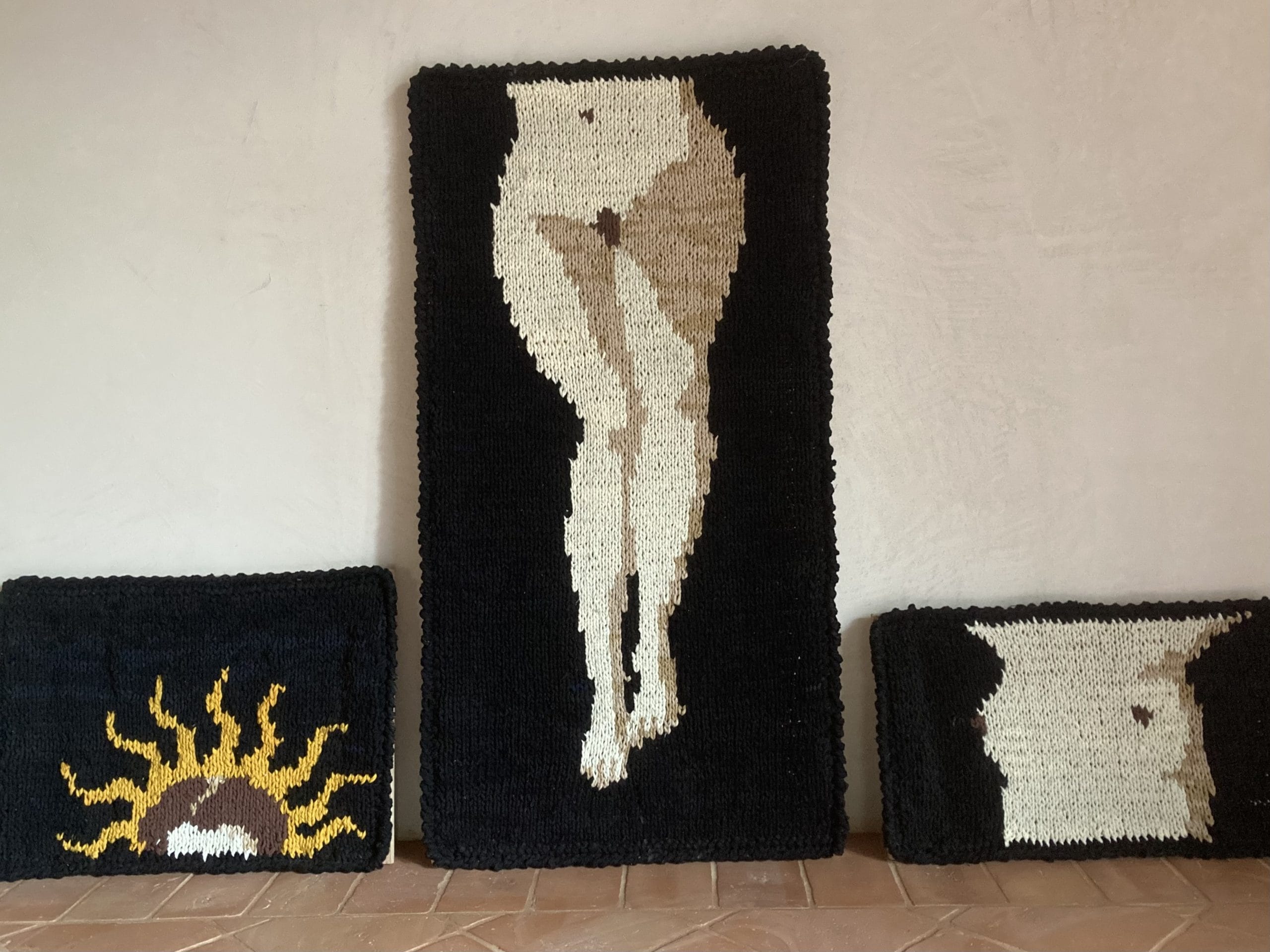
What is the work that you have created so far that you consider your masterpiece, your ‘Mona Lisa’ from which you will never part?
I think we separate from the work when we give it shape. For me, the work is born from a need for expression, once it is made it belongs to the world, it no longer belongs to me, on the contrary, if it remains too close to me, the temptation is to burn it, to free it.
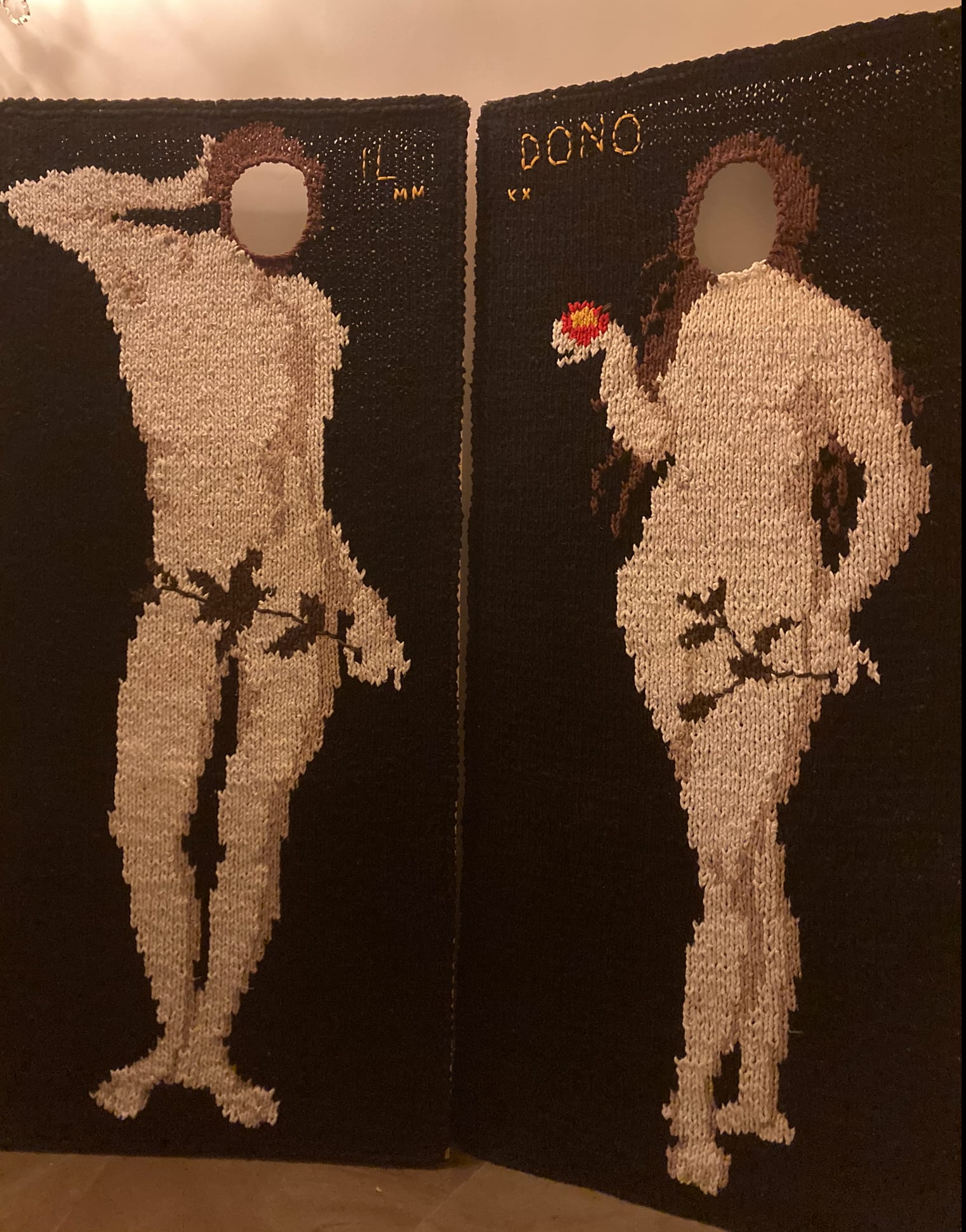
What are you working on right now? And what are the plans for the near future?
At the moment VIRGINIAPERTUTTE is absorbing almost all of my energy. I let everything that happens every day act and lead me to react and act.
My research, where my roots lie, will guide me – as it always guides me – to the next work.
Make a wish.
Not to desire but to live.
